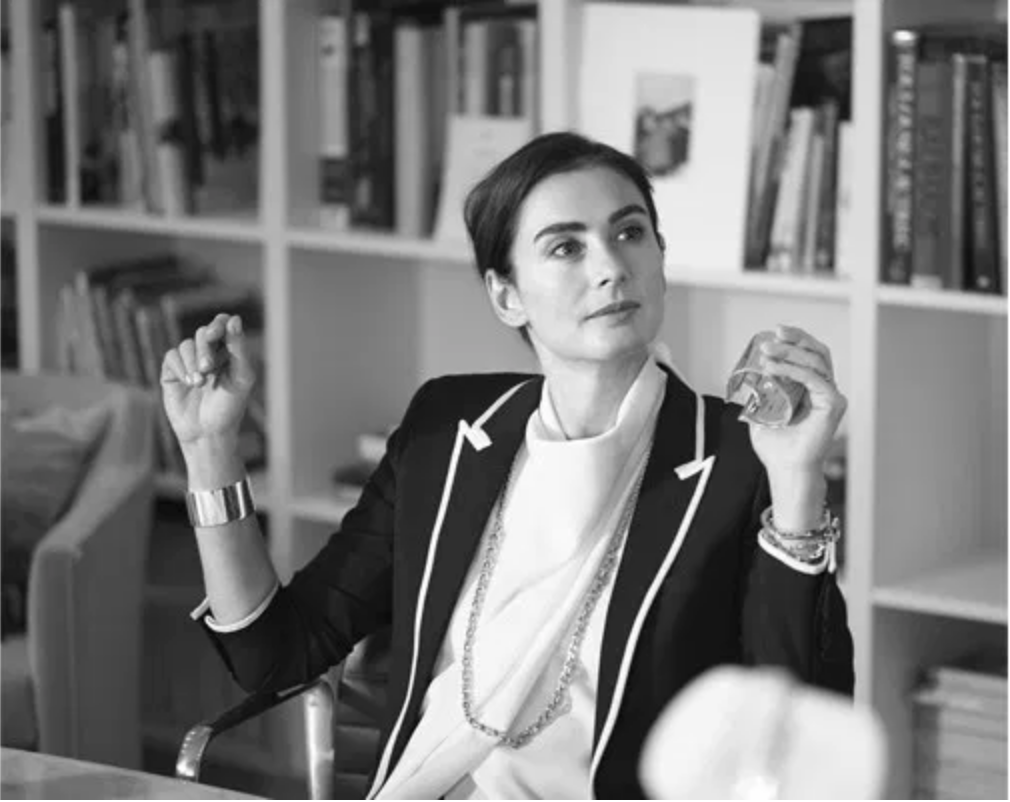Modern to a T: A Conversation with Francesca Amfitheatrof, Former Creative Director of Tiffany & Co
The stereotype of fine jewellery is as something that men buy for women on special occasions. Yet, this is outdated, as more and more women prefer to buy jewels for themselves. After all, jewellery is one of the most personal things in a woman’s wardrobe. Nowadays, women want to invest in jewellery that is stylish and versatile, but that can easily be personalised.
In this vein, heritage jeweller Tiffany & Co recently launched their latest, most contemporary collection, the Tiffany “T”, designed by new design director Francesca Amfitheatrof. The collection is specifically aimed at the professional, independent woman who knows her own taste. Amfitheatrof, a graduate of the Royal College of Art, is a trained silversmith and jeweller. Throughout her career, she created collections for Alice Temperley, Chanel, Fendi and Marni as well as jewellery and silverware for Asprey & Garrard, among others.
The Tiffany T Collection is concomitantly classic and modern, with a heavy architectural influence but still effortlessly elegant, like Amfitheatrof herself. Glass had the chance to sit down with the designer to learn more about the inspiration behind this new collection and about her experience so far in her new position.
What was the thought process behind the new collection?
The T Collection felt like a natural jumping off point for my work here, a very exciting beginning. The T Collection pays homage to the Tiffany name, but it also has a verticality and angularity that I associate with the energy and intensity of New York. The Tiffany T Collection is sculptural and bold and very closely linked to the architecture of this city. There is a lot of New York in Tiffany T, and by that I mean the relentless movement, optimism and creativity you find on these streets. This is a place of courage and reinvention that constantly sparks creativity. Honestly, I can’t think of a more exciting place I could possibly be.
How does the Tiffany T Collection relate to the company’s storied heritage? Were there any pressures in creating a more contemporary design for a brand that has been around for over 177 years?
Tiffany has always been a company of great innovators, great dreamers who are constantly pushing the boundaries of what’s possible with design. This frame of mind links directly back to the company’s founder, Charles Lewis Tiffany, who was an entrepreneur long before anyone even knew what that term meant. He was a firebrand, a risk taker, someone who constantly did things no one else had the courage to try.
At Tiffany, we carry forward that spirit of risk and vision. We’re unfettered by historical styles or schools of design; rather we create with a freedom to make – and break – our own rules. Nowadays, women from all over the world wear jewellery in ways that speak to their own individual taste but often can have a cultural reference point.
How does the Tiffany T Collection relate to today’s global woman?
The Tiffany woman has a spring in her step. She makes her own rules and she doesn’t conform. Tiffany T is first and foremost modern and makes no apologies for that. It’s for the cool girl about town who’s well-informed and has a handle on what’s happening, what’s now. She’s clever and smart and is very certain of herself and her sensuality. What I love about Tiffany T too, though, is that it’s democratic. It’s an attitude, not an age.
Your background is impressively diverse, with training as a jeweller and silversmith. How has this experience shaped your design work for Tiffany & Co? What are the parallels, if any, between creating high-end jewellery and designing silver pieces and other homeware?
I made my first piece when I was 15. One day when I was at school, my teacher brought a jeweller in to speak to our class and I was completely fascinated. Now I’m a trained jeweller and silversmith and have a master’s degree from the Royal College of Art in London. I’m obsessed with form and function and it seems to me that because metal is so malleable and changeable, you can do anything with it. Even now, when I’m on holiday, I’ll spend as much time visiting jewellery stores as I do visiting museums and galleries.
You have also designed furniture and lighting for a variety of clients, including famed interior designer Muriel Brandolini. What do you feel are the similarities and differences in designing for interior spaces – in which form, placement, and lighting play a key role – and designing jewellery – in which form and function need to be balanced?
Treat everything as an art form. Jewellery is art for the body. It’s a common thread that runs through generations and cultures from the beginning of time. We have always adorned ourselves and used jewellery as a sort of completion of our selves. It’s a way of expressing your personality, sometimes telegraphing your social status and, ultimately, making your mark in a tangible, beautiful way.
This article was originally published in Glass, Issue 19.
